Brunettes: what is this hair color and how to choose a shade for dyeing?
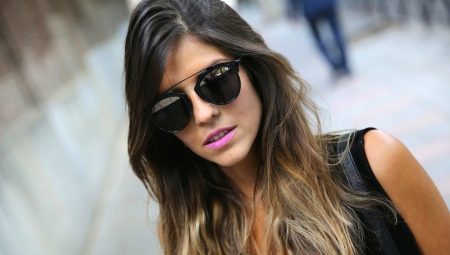
Brunettes are always in trend, and no matter how the fashion changes, the dark color of the strands is at the peak of its popularity. Brunette is a kind of general concept that unites many shades - both cold and warm. If anyone can describe a blonde at once, then with brunettes the situation is more complicated. Differences between brown-haired women and brunettes, for example, are difficult for many to articulate. Some people think they are the same thing. Others, that the brunette is a girl with strands of the color of a raven wing, burning black, and everyone else is brown-haired. Let's consider this issue in more detail.
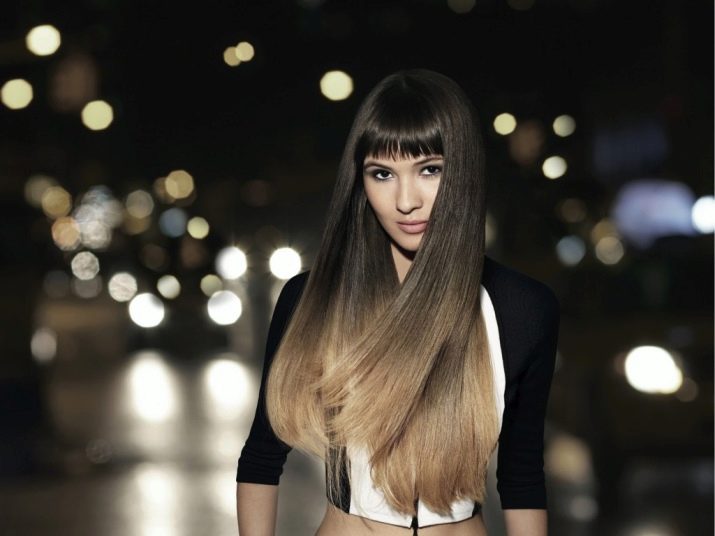
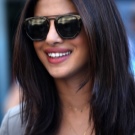
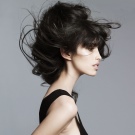
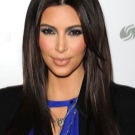
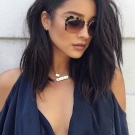
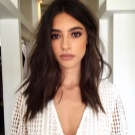
What is this color?
What a brunette looks like, what color it actually is - explains the translation from French and Latin of this word. "Brunet" translates to brown. Why brunettes are good:
- the dark color of the strands is easier to care for, especially in situations where the dyeing did not significantly lighten the hair;
- the process of coloring in a dark palette does not affect the hair structure too aggressively, since they practically do not fade;
- dark strands have a unique property - to narrow the face visually, therefore it is great for plump and chubby ladies;
- dark strands look noble and aristocratic, brunettes on a subconscious level are perceived as less frivolous than blondes and redheads.
True, they often refuse a dark shade, since it visually ages. However, stylists claim that this only applies to saturated black tones, as well as with the wrong shade selection for the color type. First of all, you need to determine your type and find out whether a cold or warm range of dark will suit you.
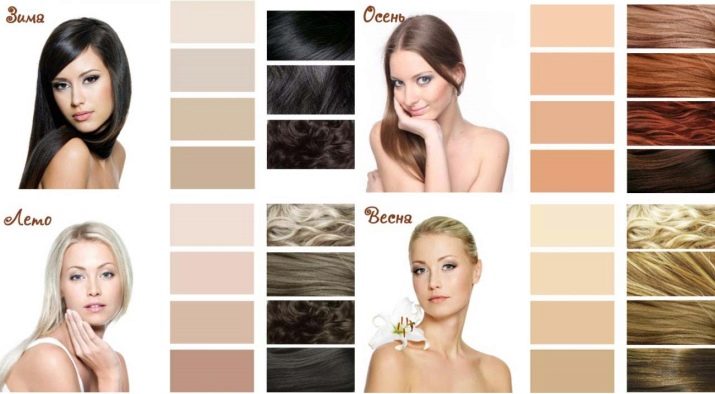
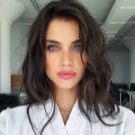
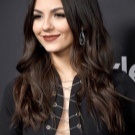
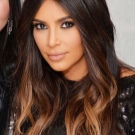

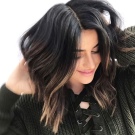
What is the difference from brown-haired women?
Most often, brunettes mean burning black-haired girls. The group of brown-haired women includes red-haired and fair-haired beauties. In fact, "brown-haired" is translated as chestnut. Despite the apparent similarities between chestnut and brown, they differ. If we compare these two concepts, it is obvious that, first of all, brunettes have a darker range of tones. Brown hair is lighter, softer, more delicate. The range of shades for brown-haired women includes:
- reddish caramel;
- light and dark cognac;
- walnut in all variations;
- varied blond, except dark.
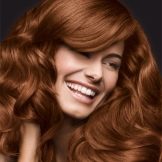
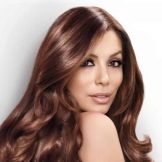


It can be concluded that brown-haired is a kind of transitional state between dark brunettes and light blondes.This palette has many natural tones, so it is considered very common now, when naturalness is in fashion.
As for brunettes, the palette looks richer for them. At the same time, the concept of "brunet" is much broader than banal black. This, for example, is both chocolate and dark blond.
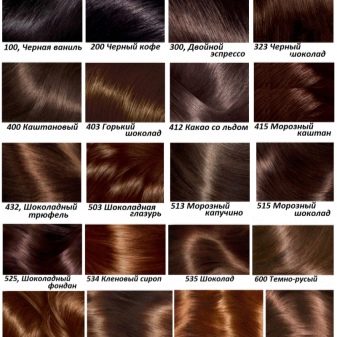

Color palette
Choosing the perfect shade for women is often a daunting task. The dark palette includes not only luxurious hot tones, but also lighter as well as cold tones. You need to choose a shade from the palette taking into account your color type. If you yourself belong to the cold type, then the dye should be from a similar range. Ebb tint can include:
- silver;
- Gray;
- violet.


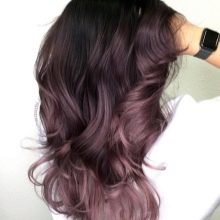
When choosing a paint, pay attention to the designations after the dot: 1, 6, C, PL, F, V. They indicate the subtone that contains the pigment.
If you are choosing a tone for the first time, consult with the master, later it will be possible to select a paint based on his recommendations. To give the strands a spectacular tone, sometimes it is enough just to choose a tinted shampoo or mask.
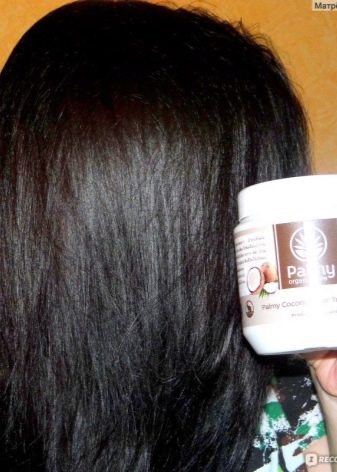
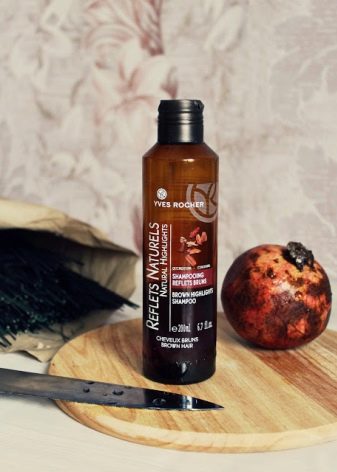
If your color type is autumn or spring, then the additional pigment should be red or yellow. Light red hair on dark strands looks just amazing, goes well with brown eyes. You'd better choose paint with markings: 3, 7, 4, R, K, W.
To select the temperature of the palette, place two pieces of fabric in turn on your face: blue, pink on one, yellow, salmon on the other. You will immediately see which range makes the skin younger and fresher.
Dark shades palette for brunettes includes:
- bluish black;
- brown-black;
- chocolate;
- brown and dark brown;
- coffee;
- bitter chocolate.
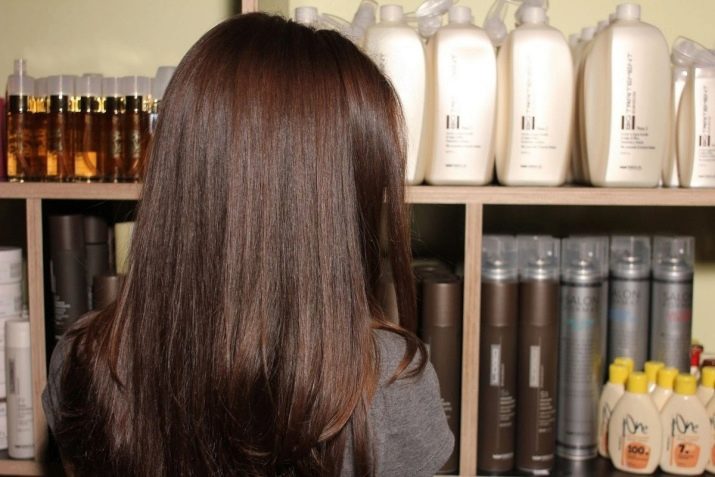
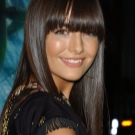

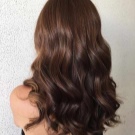
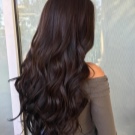

Painting techniques
Despite the variety of dyeing techniques, monochrome is still very popular among brunettes. Solid color is perfect for conservative, elegant ladies. The advantages of this technique: ease of implementation, giving a glossy shine to the hair, emphasizing the expressiveness of facial features. If you have gray hair, then monochrome coloring will look very original.
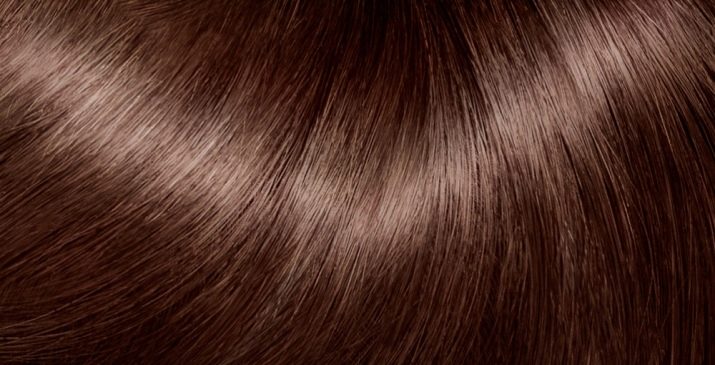
Another popular technique is highlighting. She will make the image softer, more feminine, more original. There are quite a few varieties of this technique.
- Venetian. It is also called blond for brunettes. Gives freshness, youth to the face. At least two warm tones are used: cognac, gold, champagne. As a result, the brunette gets a smooth transition of shades from dark to light.
- American. Great for brunettes. It consists in applying several shades at the same time. You can use catchy shades or discreet ones if you like. This color looks most effective on curls.
- Creative. A very relevant technique that seems to mix pepper and salt: dark and white-gray tones. A very expressive way to highlight your individuality.
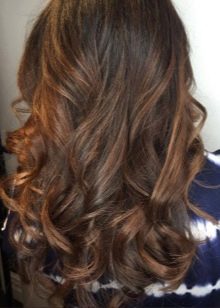
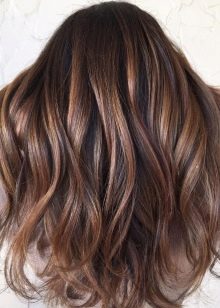
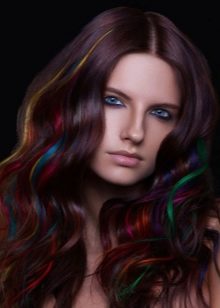
Stylists also recommend the following coloring techniques for those with dark strands:
- booking - the inclusion of highlights in the hair, as if naturally lightened by the sun, which allows you to combine all tones of dark and light brown, chocolate, coffee;
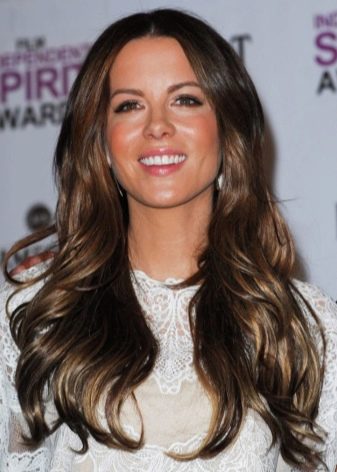
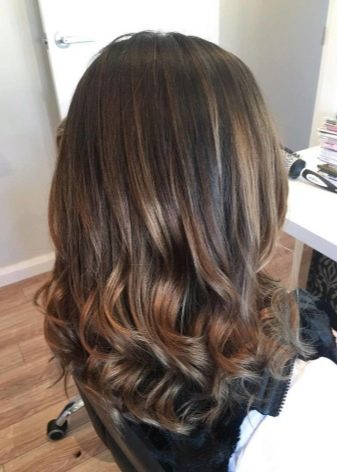
- Tiger's Eye - makes the strands iridescent, shades play very beautifully on the strands, it is more suitable for a cold dark palette;
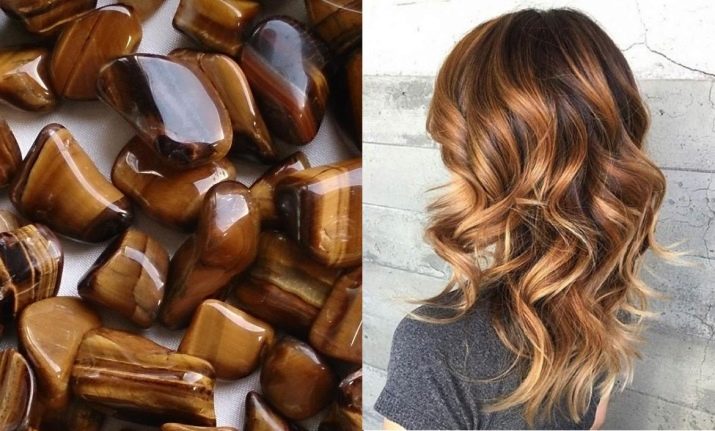
- shatush - combines several shades with a smooth flow of one into another, looks natural and luxurious;
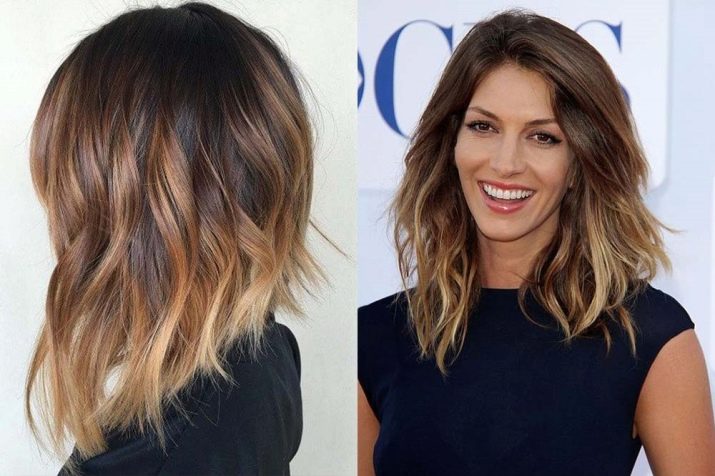
- babylights - consists in the successive lightening of dark curls at the ends and in the face area;
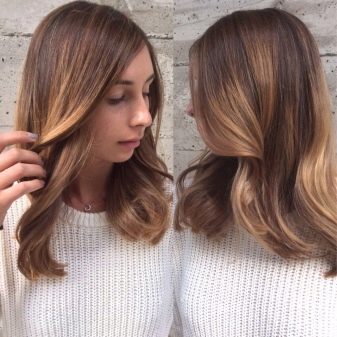
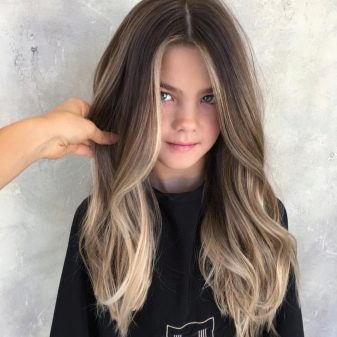
- ombre - This is a coloring in two tones, which creates a stretch of color on the strands, a darker shade can be both on the face and at the ends;
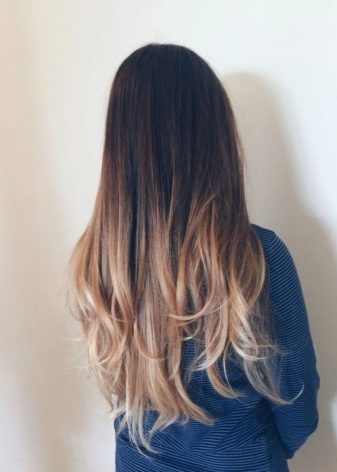

- sombre - a great option for brunettes, it is also called a soft ombre, is to create invisible transitions from one shade to another;
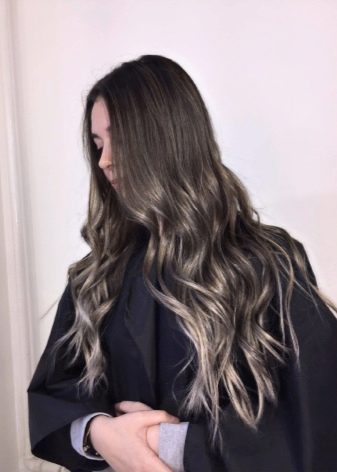
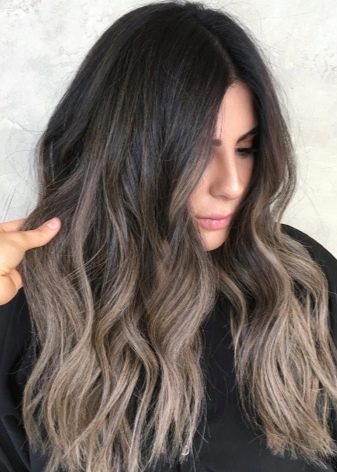
- balayage - one of the most non-aggressive techniques is to create iridescent highlights on the strands, very natural and soft;
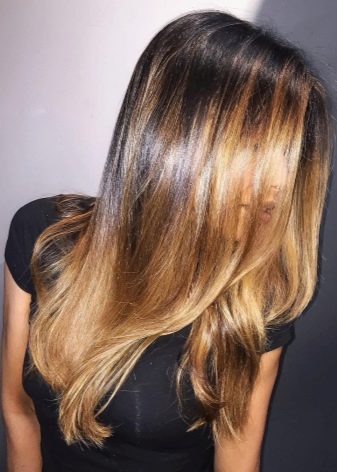
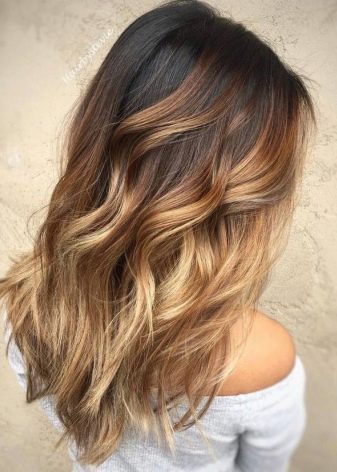
- rainbow colors - suitable for those who love bright transformations, is to place a mixture of shades of greenery, violet, rose, blue on a dark background;
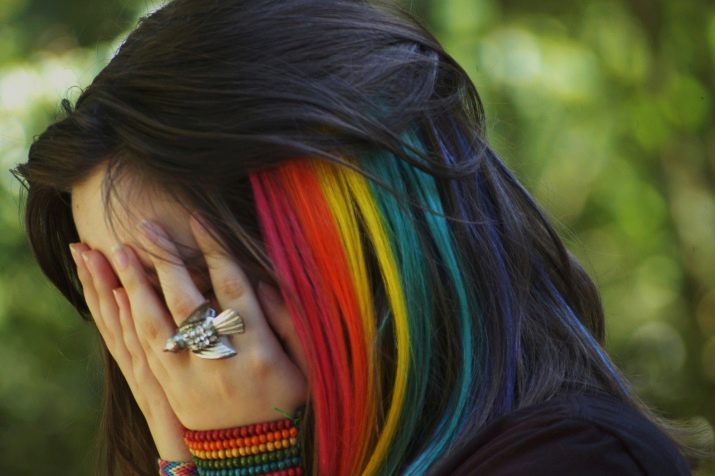
- bicolor - consists in a combination of opposite or similar colors in the palette, based on contrast;
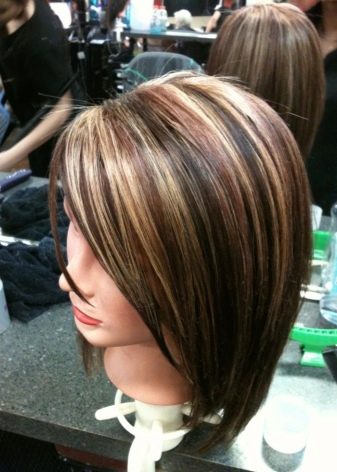

- Galaxy - coloring for those who love extravagance and cosmic motives, it will not work to create this bold composition on their own;
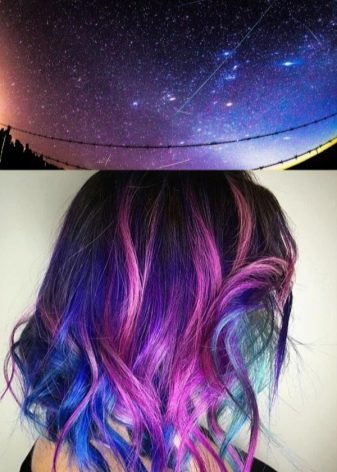
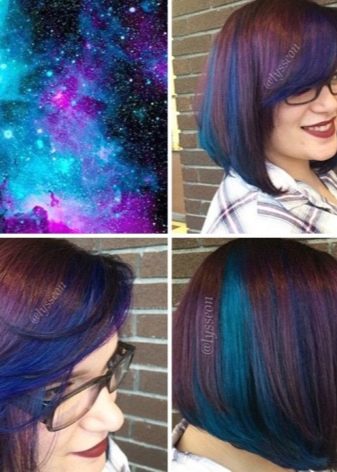
- sea sunset - the basis is an ombre, in which the shades are combined so that they are associated with the sunset;
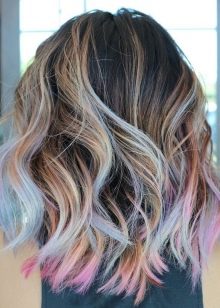
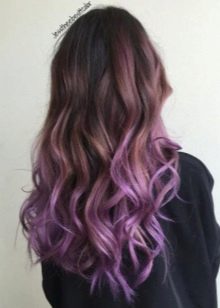

- artistic - an original way of embodying the image of famous paintings or their fragments on dark strands;

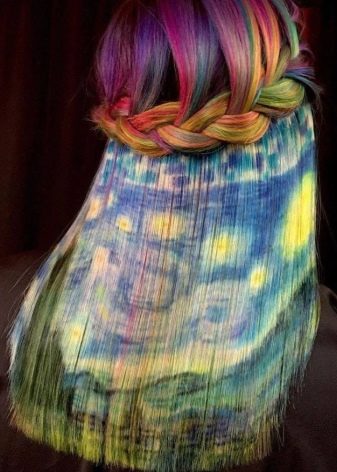
- Cherry bombre - the basis of this technique is shatush in cherry tones, ideal for brunettes;
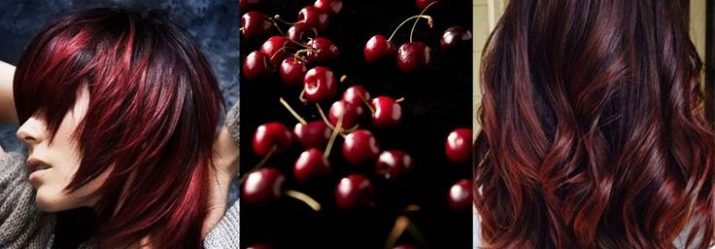
- ashy - a very fashionable coloration that combines dark cold tones with ash;

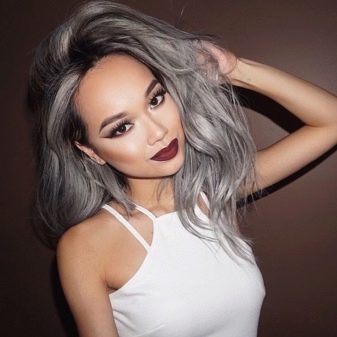
- colombre - ombre rainbow, which uses bright colors;
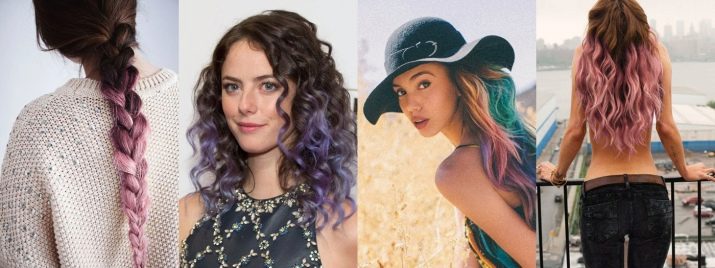
- funny tips - dark strands are tinted with shades of contrasting colors, the most popular are pink, violet, green, yellow.


How to freshen up a color?
If you are happy with your dark strands, but you want to refresh the image, look rested, original and expressive, you can use the secrets of stylists. This effect provides a partial lightening of the strands, which looks as natural as possible, as if the strands were burnt out under the southern sun. Sign up for a master on ombre, balayazh or shatush, modern types of highlighting. These are gentle methods of coloring, they do not affect the root part, which means they are less harmful to the strands.
Expressive highlights, transitions and color must be periodically refreshed so that the coloring remains effective and beautiful for as long as possible. Stylists advise using leave-in conditioners for this - they will preserve the strands before styling and retain their color. A great way to freshen up your hair is with a salt spray. It is enough to sprinkle the strands with a product of this type and dry with a hairdryer, slightly squeezing the curl in your hands. You will immediately take on the appearance of a person who has just returned from the beach.
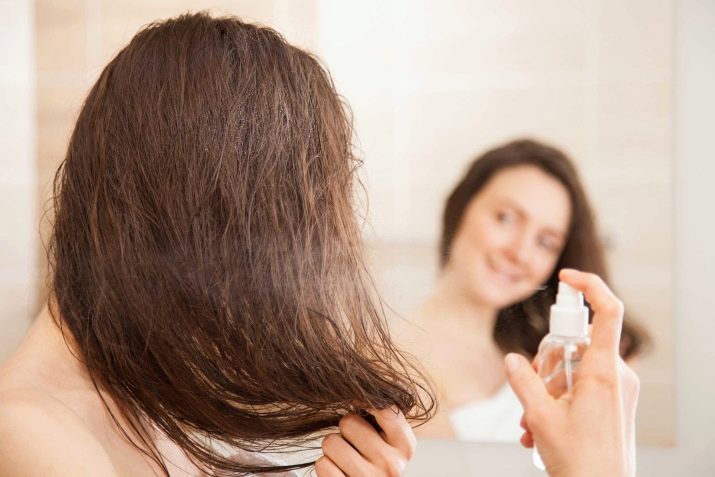
Tint products such as shampoos and conditioners will help freshen up the color without staining. They give the strands a slight sheen, shine. In addition, there are many other methods that will not only give a new shine to dark strands, but also make them healthier.
For these purposes, you can use sage, lemon juice. With the help of the latter, you can create the impression of highlighting or burnt-out strands. It is enough to moisten the selected curls with lemon juice and go outside on a hot day.
Sage broth will give saturation and shine to dark strands. It is necessary to brew the leaves, and rinse the hair with the cooled liquid. The term of the course is 1 month.
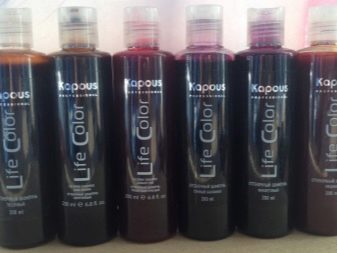
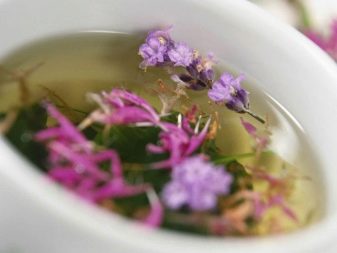
Hair care
Coloring by any means requires a change in the care procedures. First of all, hairdressers recommend that brunettes refuse to wash their hair too often, especially if the strands are dry. It is better to use co-washing, washing without shampoo, but using conditioner.
And you can also reduce the damage to the strands by using a mixture in which one quarter of the shampoo accounts for three quarters of water.Dark strands have particles at the roots that prevent fat from spreading to the ends. They also negatively affect the condition of the strands, making them brittle.
It is important to use only eco-products - the more organic matter in the composition of your hair care cosmetics behind the strands, the healthier your hair will be.
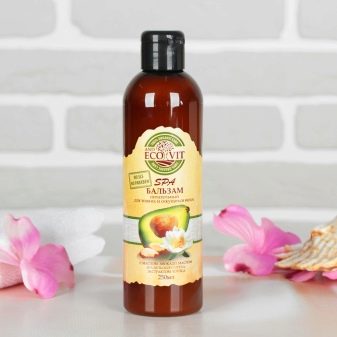
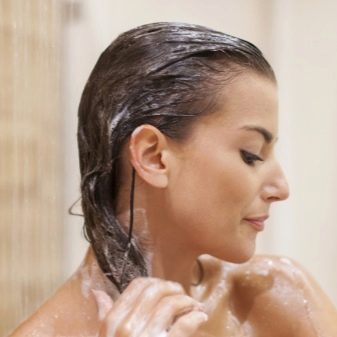
What information on the packaging should attract the owners of dark strands:
- the presence of natural oils - coconut, jojoba, almonds;
- the mark "organic", the word natural does not carry anything really useful;
- aloe vera extract, grape seeds.
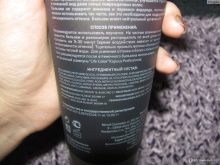
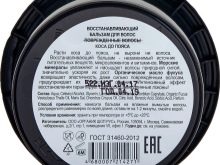

Almost all professional brands have lines for black hair. Dark strands - both natural and dyed - need high-quality hydration. This will help you avoid the nasty split ends problem. Treat the ends with coconut oil or castor oil more often, minimize hot styling: hairdryer, iron, tongs, styler. Be sure to use heat protectants before styling.
Masters recommend periodically arranging a course of care with protein. Rub your head with an egg every month, or use special professional products of this type. Protein perfectly prevents brittleness, accelerates growth, gives shine and brightness to the strands.
However, it is necessary to observe the measure here, an excess of protein can lead to the opposite result.
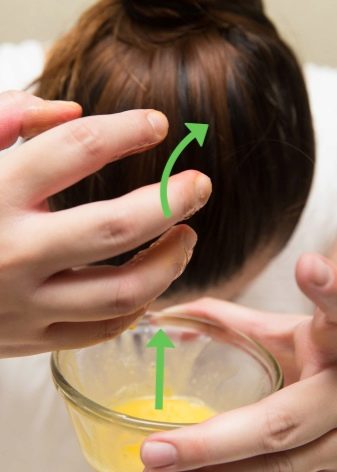

Choosing the right comb is very important. A wide type of comb is ideal; do not use brushes and fine-toothed combs. They damage hair follicles and break hairs. The combs should not get stuck in the curls.
It is not recommended to comb the dyed strands several times a day, it is enough just to untangle them as needed. Never comb wet strands, but it is better if they are not completely dry before the procedure.
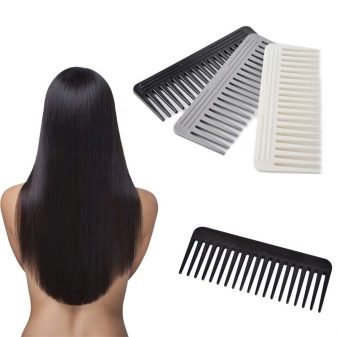
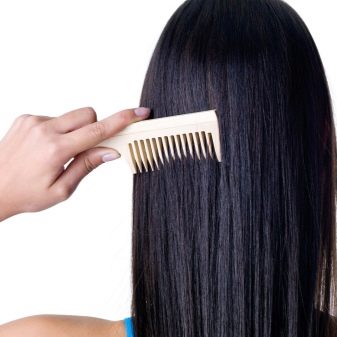
Owners of dark strands are recommended:
- sleeping on a satin pillow or tying curls with a ribbon of the same material;
- cut the split ends periodically;
- give up tight elastic bands;
- try to choose organic care products;
- use oils;
- do not buy products containing oil;
- change styling methods periodically;
- the longer the list of components with a long name in the composition of the product, the more likely it will do more harm than good;
- cover the strands when you are under the sun or in a tanning bed, direct UV rays negatively affect the condition of the strands and their appearance;
- be sure to protect your hair when you swim in the pool, visit the baths and saunas.


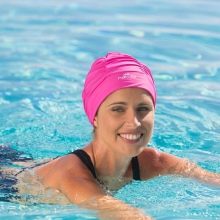
Purchase for care:
- quality shampoo for your type of strand;
- conditioners for daily use and deep hydration;
- protein products;
- natural essential oils;
- masks, balms, serums;
- means for protection against temperature influences.

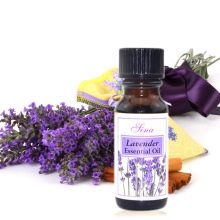

How to choose a hair color, see below.








